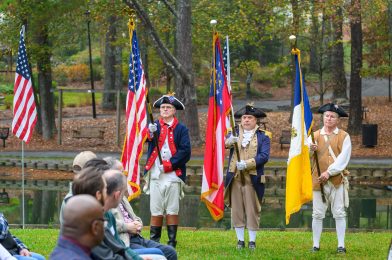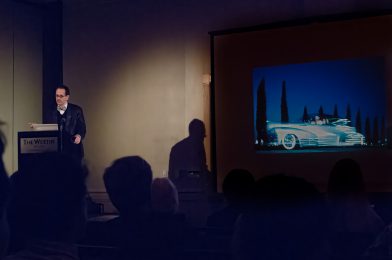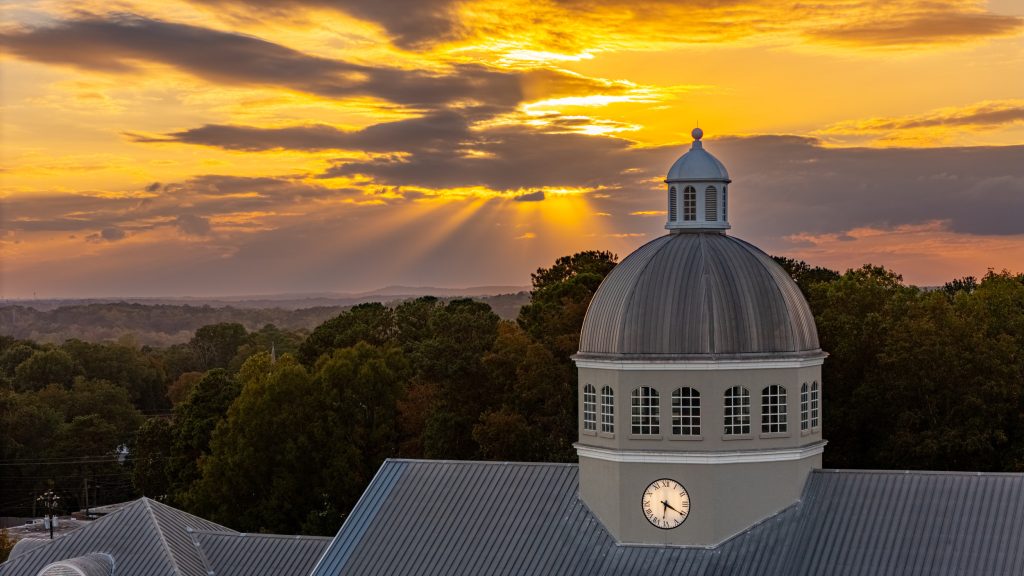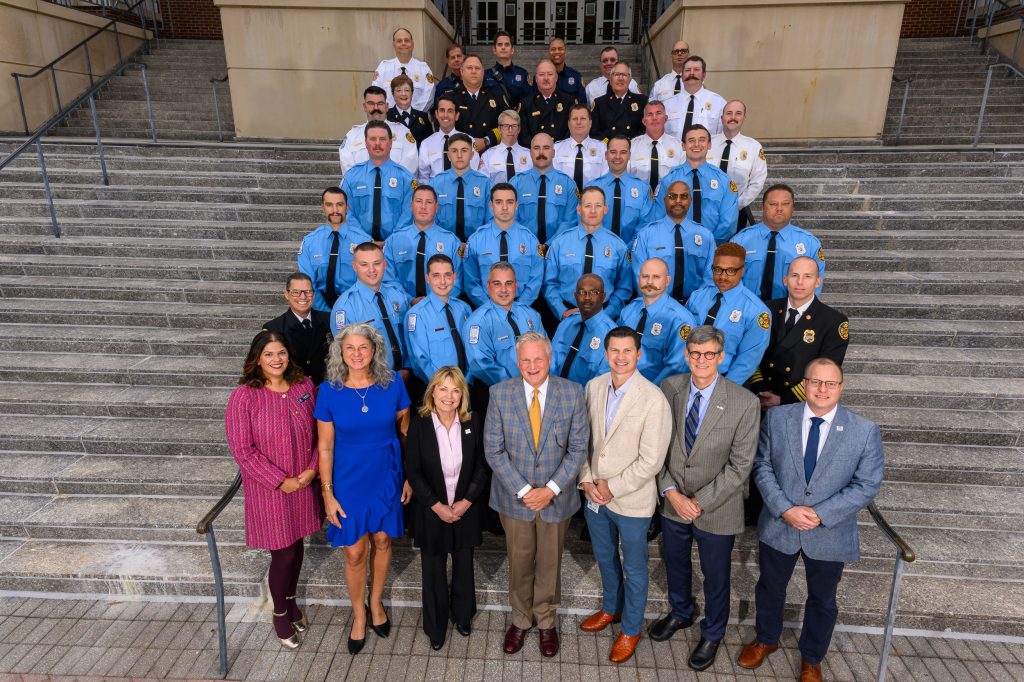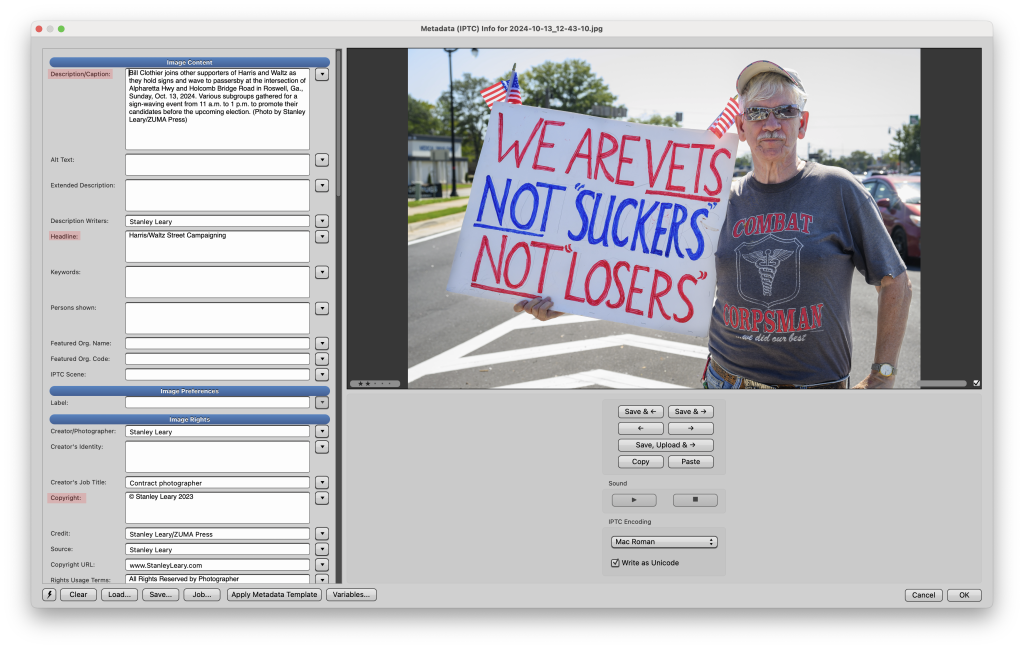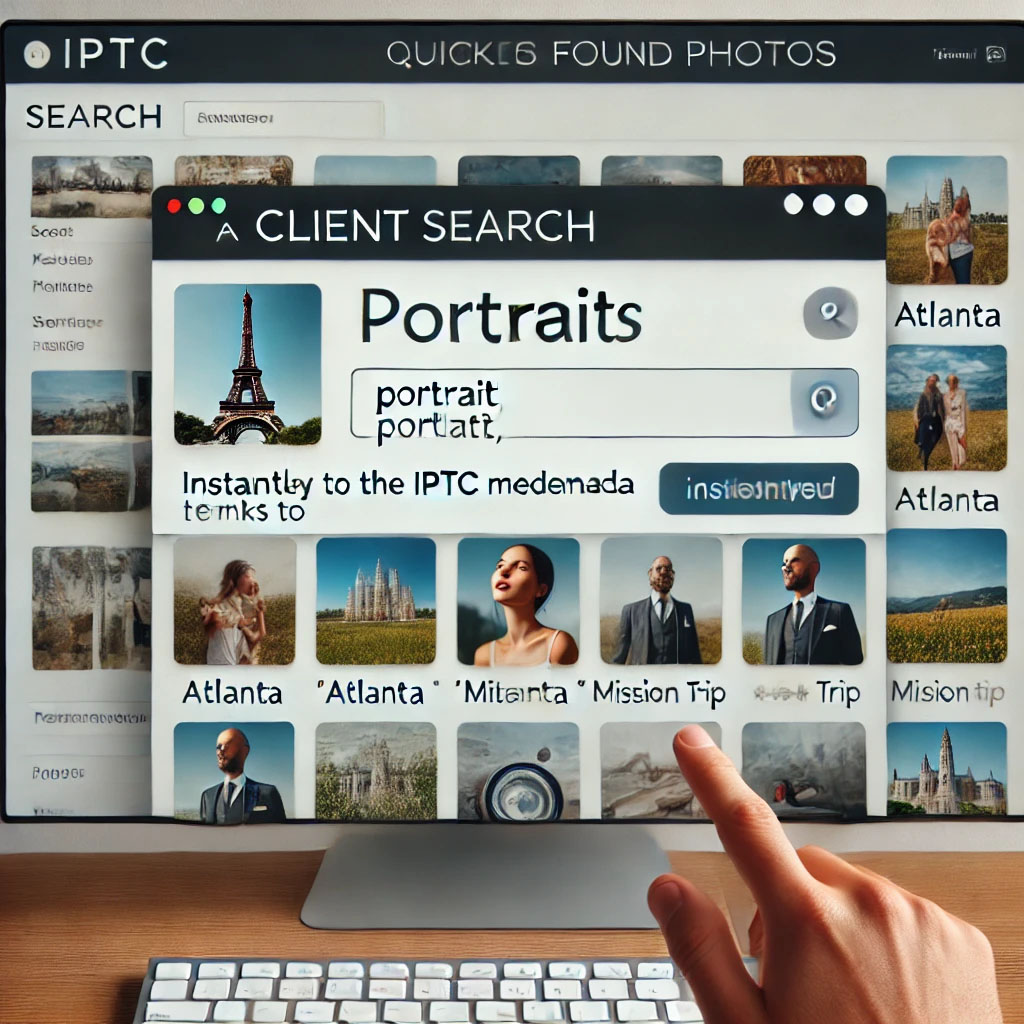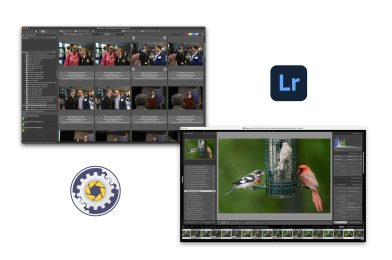Craig Benton, Rick Reese III, and Ron Redner of the Sons of the American Revolution Color Guard present the colors during the Veterans Day ceremony at Roswell Area Park Pond on Monday, Nov. 11, 2024, in Roswell, Ga.
Each November 11, Roswell, Georgia, gathers to honor veterans with an event that feels as personal as it is profound. Today’s ceremony at Roswell Area Park was no different. As attendees reflected on the bravery and sacrifices of our veterans, I found myself drawn once again to cover this event, not just as an observer but as a storyteller, capturing moments that speak to shared community values and connections.
Documenting Veterans Day events here, close to home, goes beyond honoring veterans and preserving community stories. It also gives me a regular opportunity to stay proficient in my craft, keeping my eye sharp and my equipment in top shape. Photography, especially in documentary and storytelling genres, is a skill that benefits from consistent practice in various environments. When capturing Roswell’s Veterans Day event, I’m honing my ability to find meaningful angles and frame shots naturally and anticipate the split-second emotional moments that make stories resonate.
This year, the event featured powerful highlights: Roswell Mayor Kurt Wilson, an Army veteran himself, spoke from the heart, expressing gratitude to those who served; veterans seated in the front rows received a visible place of honor; and the Sons of the American Revolution Color Guard presented the colors, bringing a solemn tradition to the community ceremony. Standing on the banks of the Roswell Area Park Pond, I caught glimpses of the ceremony reflected in the water—a reminder of how our community traditions mirror those around the world.
In Europe, many recognize this date as Armistice Day, with similar ceremonies marked by silence and wreath-laying, while Britain’s “Poppy Day” symbolizes remembrance. Being able to capture these moments for Roswell on a day with such global significance is a humbling reminder of the shared history and respect communities everywhere hold for their veterans.
My images from today were shot for Zuma Press, a platform that puts these local stories on the national and even international stage. By covering events like this, I’m able to create images that highlight Roswell’s distinct character and the universal language of respect and honor. Whether photographing global workshops or local community events, each assignment brings something new, helping me grow and stay connected to my craft and community.

